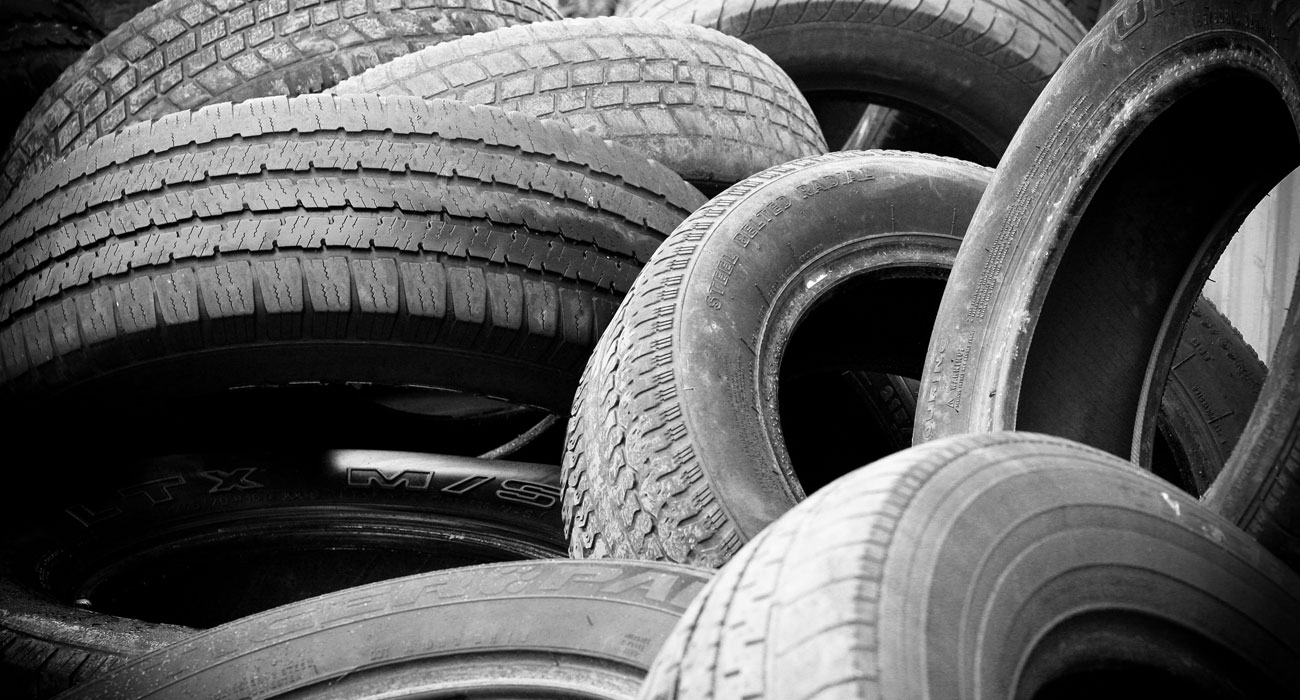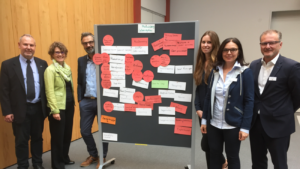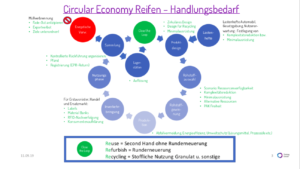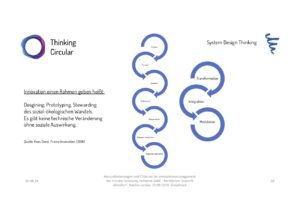
Why not reinvent the wheel?
According to a study by Fraunhofer Umsicht, we pollute our water with one kilogram of microplastic from tire abrasion per year and head. This is a tremendous amount and the phenomenon is known to all. Because if a tire would not wear, then some properties would be poorly pronounced, such as the braking behavior of a car.

v.l.n.r. Michael Schwämmlein, BRV, Eveline Lemke, Thinking Circular, Jürgen Bertling, Fraunhofer Inst., Larissa Gschwind und Prof. Dr. Carmen Jordan, HS Osnabrück, Frank Lindner, Evonik
But can we be satisfied with that? The scrap tire industry does not want that. Therefore, on 10 September 2019, the German Federal Environmental Foundation invited a meeting of associations, science, waste disposal companies and retailers to tackle the topic of “circular economy” scrap tires.
The challenges are manifold, but manageable and can be presented very clearly in a cycle. I summarized my input and the findings of science in September 2019 in my presentation. The slides for the lecture can be found here
Retreading – part of the problem, part of the solution
 Now all actors are required to deliver their plans for the work on the problem areas mentioned, which relate to the whole of the value chain. However, the working group cycle of the expert forum made it clear that many of the problems raised can not be solved without joint efforts to design. In particular, the difficulty associated with the old tire retreading weigh heavily. Consumers are distrustful of retreading, although this has been a matter of course in the aviation industry for years. Up to 7 times aircraft tires are retreaded and I am not aware of a survey that, for safety reasons, passengers refuse to board an aircraft for that reason. So why is not that also possible for the automotive industry? Sharing models, where customers can buy km tire performance, have long been in many places in the world, such as the truck industry in the USA. Why should not such models work here?
Now all actors are required to deliver their plans for the work on the problem areas mentioned, which relate to the whole of the value chain. However, the working group cycle of the expert forum made it clear that many of the problems raised can not be solved without joint efforts to design. In particular, the difficulty associated with the old tire retreading weigh heavily. Consumers are distrustful of retreading, although this has been a matter of course in the aviation industry for years. Up to 7 times aircraft tires are retreaded and I am not aware of a survey that, for safety reasons, passengers refuse to board an aircraft for that reason. So why is not that also possible for the automotive industry? Sharing models, where customers can buy km tire performance, have long been in many places in the world, such as the truck industry in the USA. Why should not such models work here?

It is high time that the retreading becomes popular again. But here too, the automotive industry must help. The reason is the high complexity of different types of tires. Each retreading, however, must be carried out individually according to brand, size, material etc. For retreading companies, this means a massive investment to meet all formats. Here, the politics must help to bring the extended producer liability in a statutory scheme and in the implementation. The associations are already campaigning for this. It’s about time that this is heard.
After all, we will not be able to get around reinventing the tire in much of the wheel of e-mobility requirements. We will accompany the process and continue to report here.



No Comments